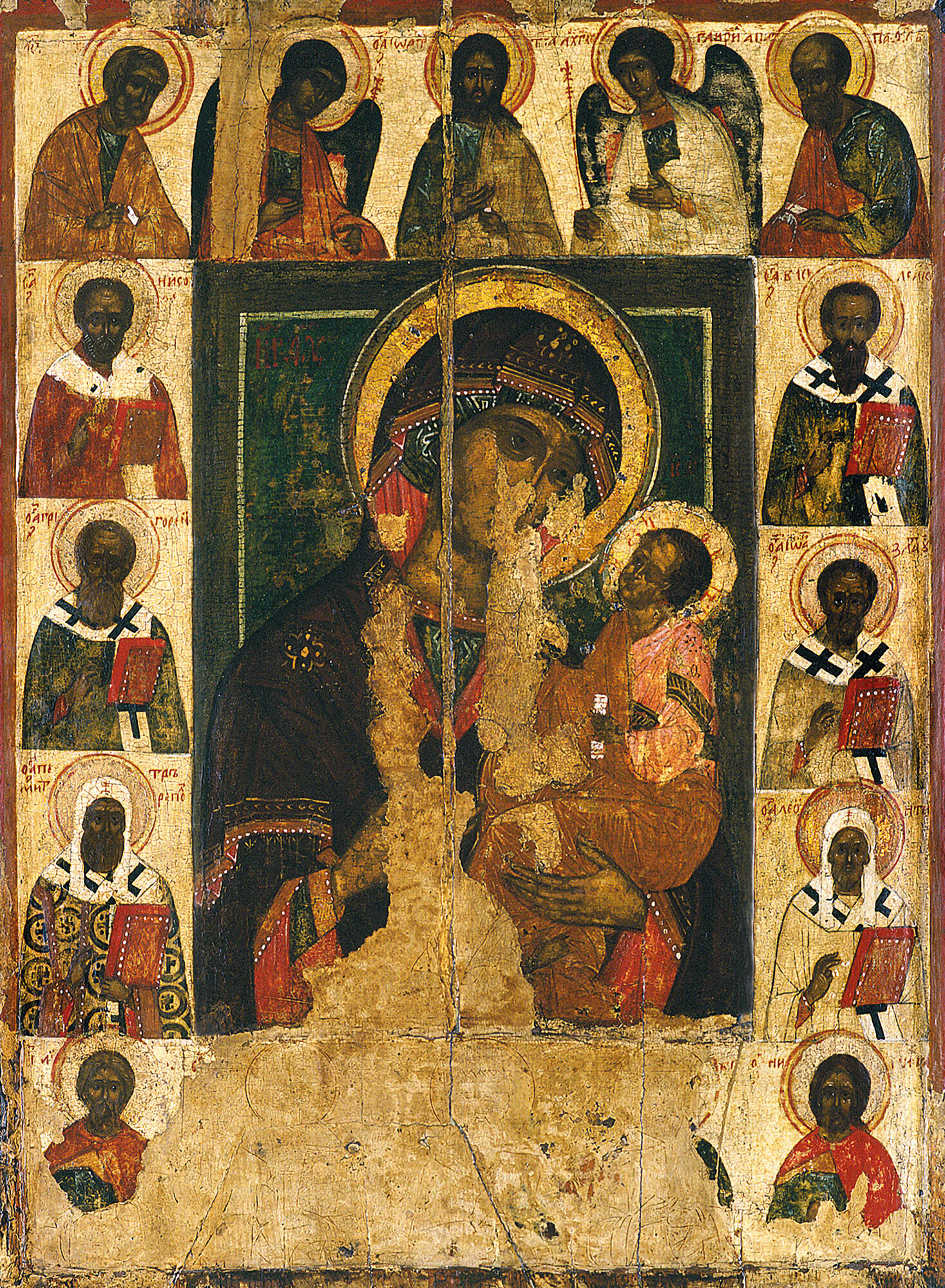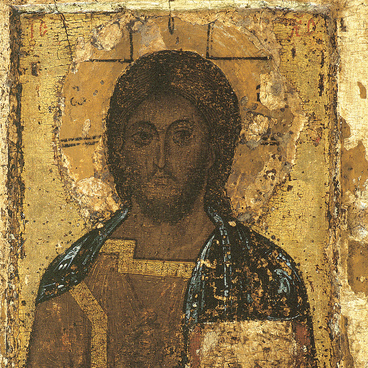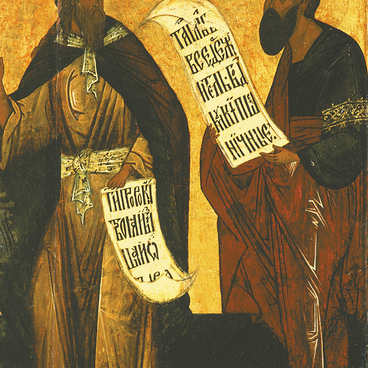Legend has it that the first image of Our Lady of Jerusalem was created by Saint Luke the apostle in Gethsemane fifteen years after the Ascension of Jesus, in 48 AD. Since the image is believed to have been painted during Mary’s lifetime, it is considered to be an accurate depiction of her face. In total, Saint Luke created 70 portraits of the Virgin Mary.
The icon was intended for the Christian community that had already formed in Jerusalem by that time. There is a legend that it was through this icon that the Mother of God told Mary of Egypt to abandon her sinful life and devote herself to serving God.
The story goes that when the future Byzantine emperor Leo the Great was young, he once heard a voice from out of nowhere. The voice predicted that he would become an emperor and ordered him to build a church near a holy well to celebrate the Mother of God. In 463, Leo I fulfilled the order, and the Jerusalem icon was placed in the church of Pege, or the Spring. During the reign of emperor Heraclius, the wonderworking icon protected Byzantium from the Scythians. After that, it became venerated and was transferred to the Church of Blachernae. Almost three centuries later, Prince Vladimir was baptized in Korsun and received this icon as a present from Leo VI the Wise. Later, he sent the icon to Novgorod which was the second city to be baptized after Kiev.
In 1571, Ivan the Terrible ordered to place the icon in the Dormition Cathedral in Moscow together with other relics of appanage princes. This was also when numerous copies of the icon were painted. Without them, the image would not have survived to this day: the original icon was lost during the Patriotic War of 1812 and is believed to be kept somewhere in France. The icon belongs to the Hodegetria style. It is a half-length image of Mary with her head slightly inclined. There are also other chest-length, full-length and frontal versions. With one hand, Mary holds the Child Jesus, and the other one is pressed to her chest. Jesus is facing his Mother, with his hands painted in the same manner as the Christ Pantocrator: he makes a gesture of blessing with the right hand and holds a scroll in the left one.
This is one of the most venerated Christian icons which was particularly popular among Russian and Byzantine painters. It served as a prototype for the Georgia, Kazan, and Iveron Icons of the Mother of God, as well as the Surety of Sinners Icon.
Although the icon is only partially preserved, it demonstrates the excellence of Old Russian icon painting without any folkloristic and provincial specifics. The image of the Mother of God is surrounded by the figures of selected saints representing the Earthly Church. The copy from the Dormition Cathedral includes images of saint martyrs and apostles. The inclusion of Russian saints makes this particular icon all the more interesting.
The icon was intended for the Christian community that had already formed in Jerusalem by that time. There is a legend that it was through this icon that the Mother of God told Mary of Egypt to abandon her sinful life and devote herself to serving God.
The story goes that when the future Byzantine emperor Leo the Great was young, he once heard a voice from out of nowhere. The voice predicted that he would become an emperor and ordered him to build a church near a holy well to celebrate the Mother of God. In 463, Leo I fulfilled the order, and the Jerusalem icon was placed in the church of Pege, or the Spring. During the reign of emperor Heraclius, the wonderworking icon protected Byzantium from the Scythians. After that, it became venerated and was transferred to the Church of Blachernae. Almost three centuries later, Prince Vladimir was baptized in Korsun and received this icon as a present from Leo VI the Wise. Later, he sent the icon to Novgorod which was the second city to be baptized after Kiev.
In 1571, Ivan the Terrible ordered to place the icon in the Dormition Cathedral in Moscow together with other relics of appanage princes. This was also when numerous copies of the icon were painted. Without them, the image would not have survived to this day: the original icon was lost during the Patriotic War of 1812 and is believed to be kept somewhere in France. The icon belongs to the Hodegetria style. It is a half-length image of Mary with her head slightly inclined. There are also other chest-length, full-length and frontal versions. With one hand, Mary holds the Child Jesus, and the other one is pressed to her chest. Jesus is facing his Mother, with his hands painted in the same manner as the Christ Pantocrator: he makes a gesture of blessing with the right hand and holds a scroll in the left one.
This is one of the most venerated Christian icons which was particularly popular among Russian and Byzantine painters. It served as a prototype for the Georgia, Kazan, and Iveron Icons of the Mother of God, as well as the Surety of Sinners Icon.
Although the icon is only partially preserved, it demonstrates the excellence of Old Russian icon painting without any folkloristic and provincial specifics. The image of the Mother of God is surrounded by the figures of selected saints representing the Earthly Church. The copy from the Dormition Cathedral includes images of saint martyrs and apostles. The inclusion of Russian saints makes this particular icon all the more interesting.



